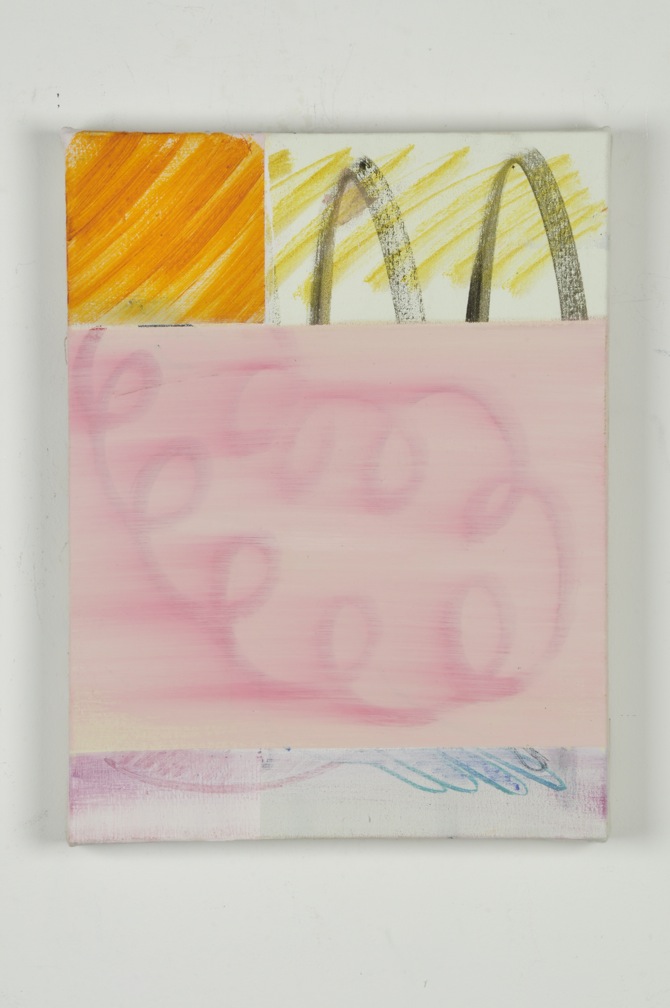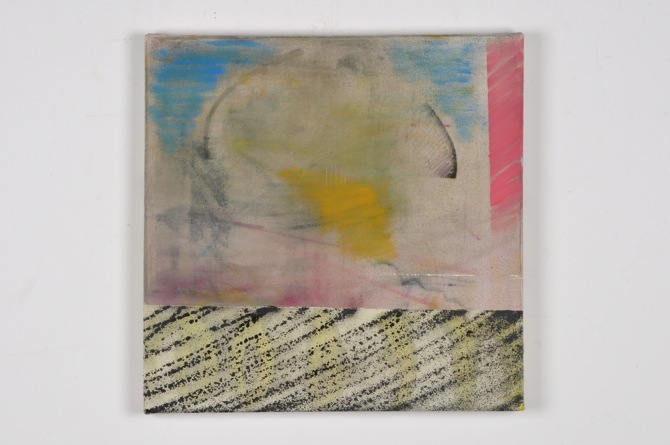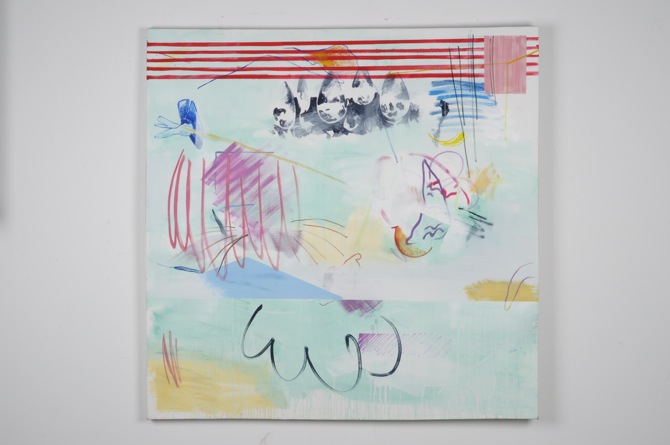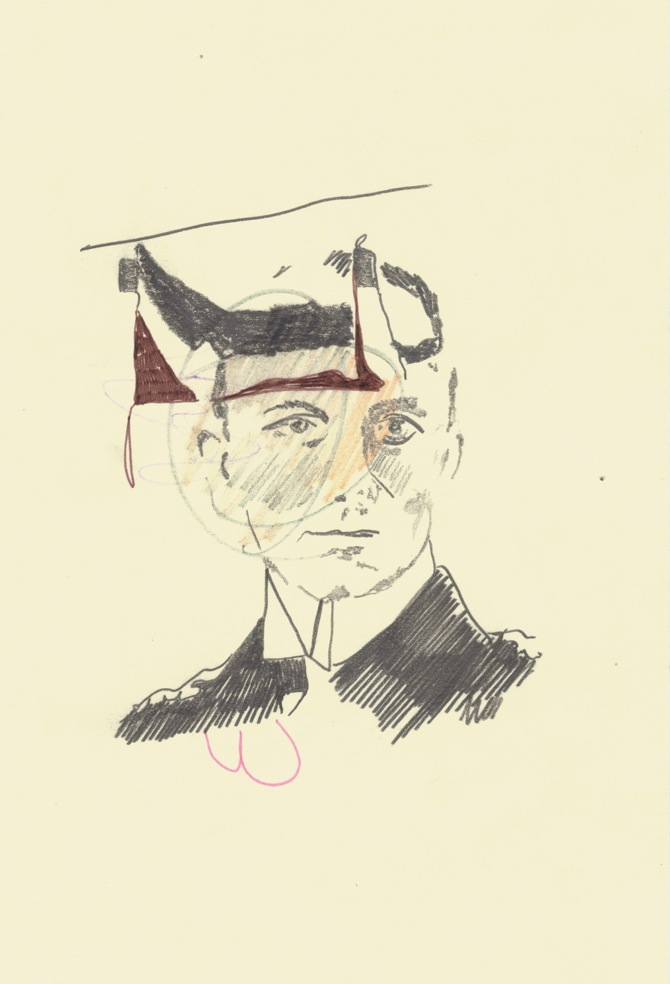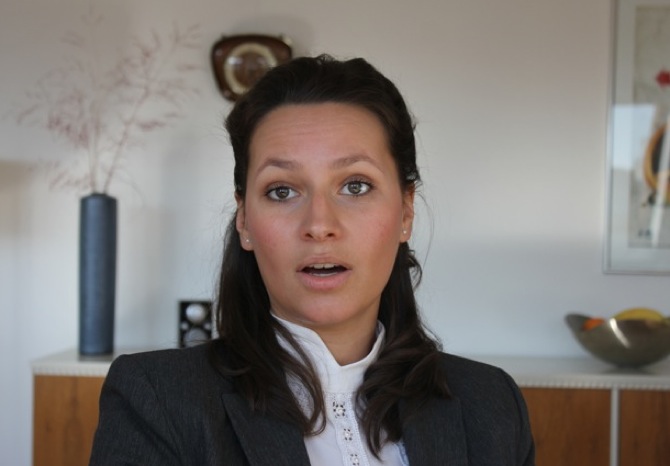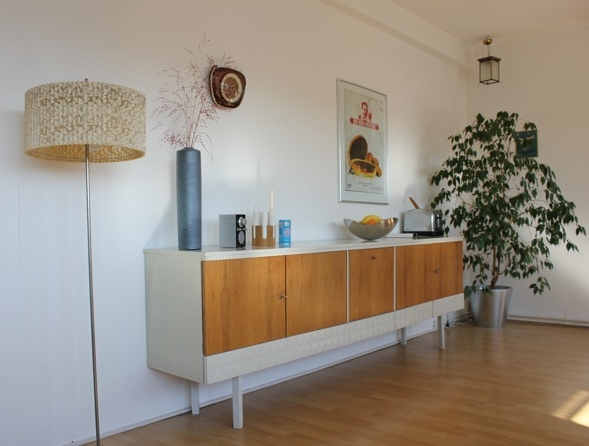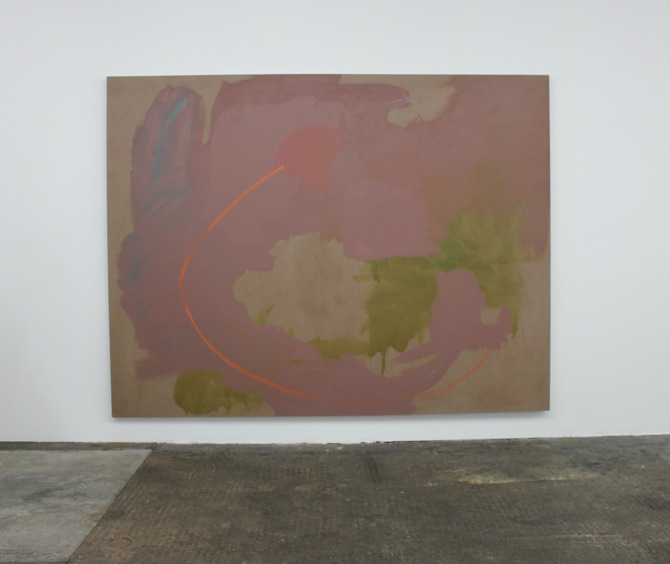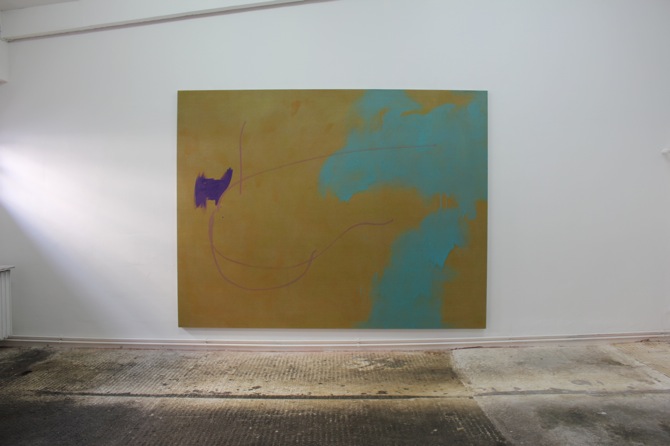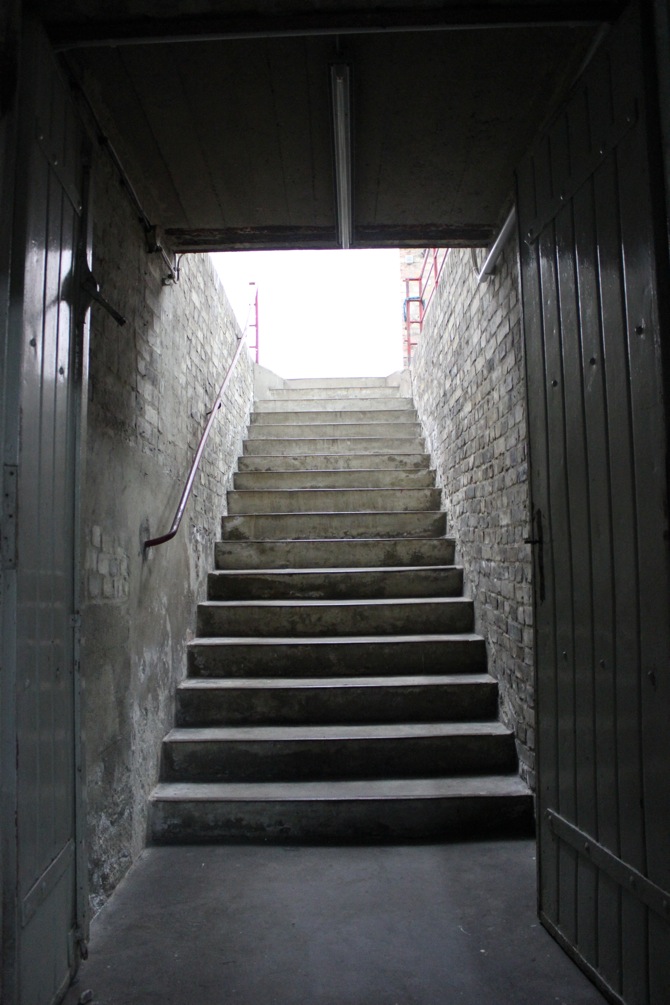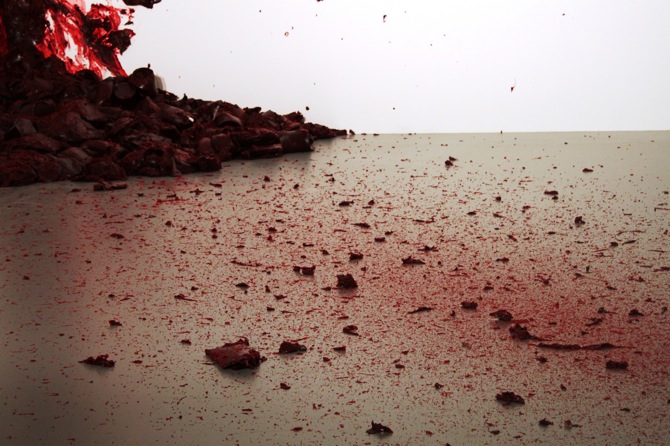
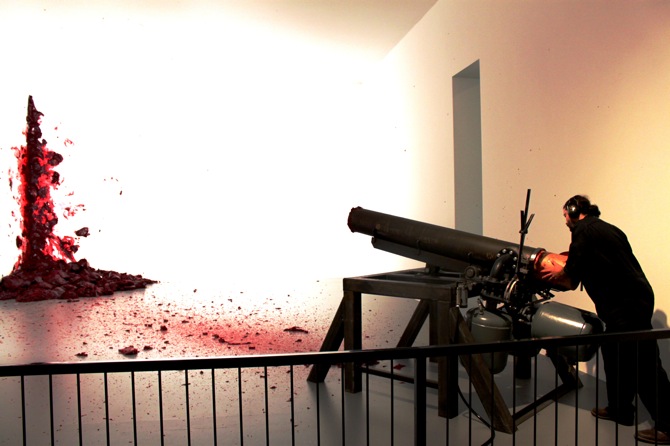
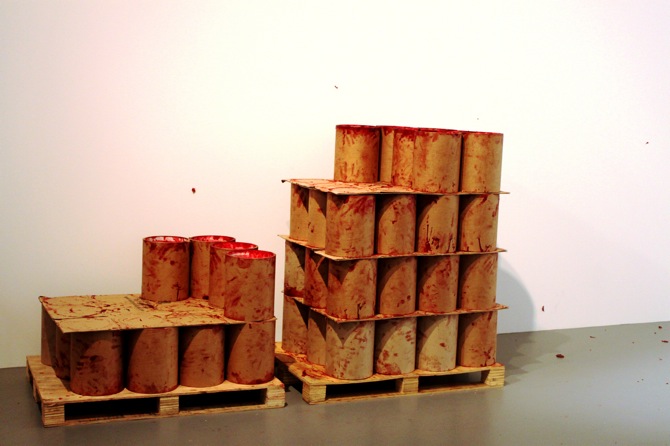
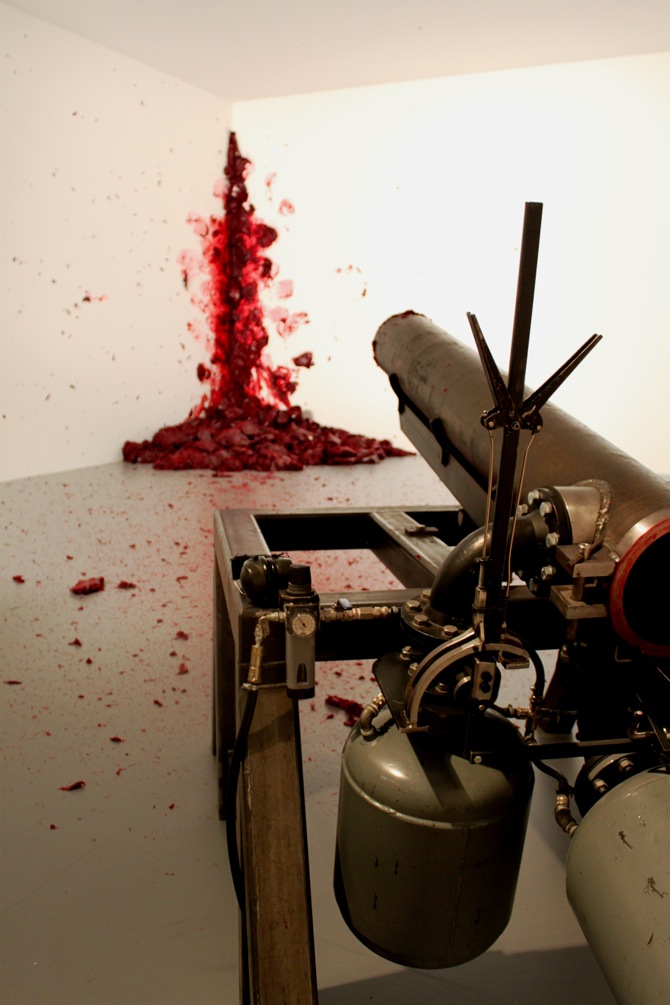
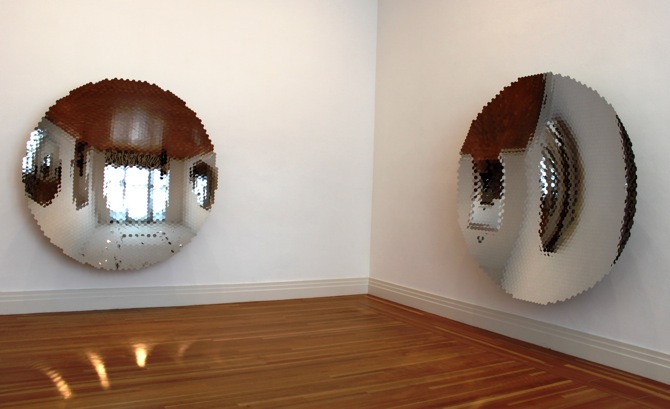
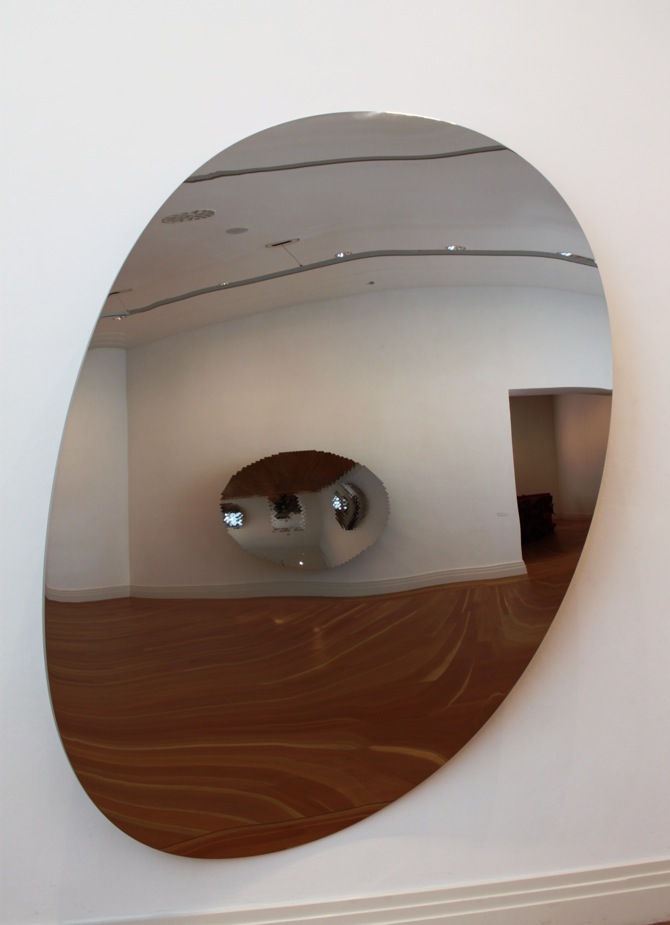
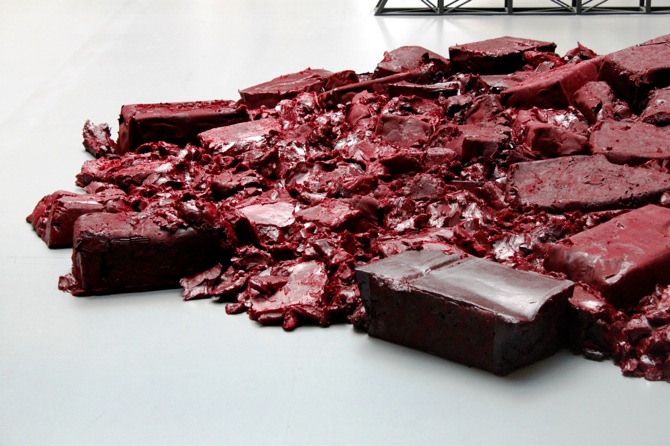
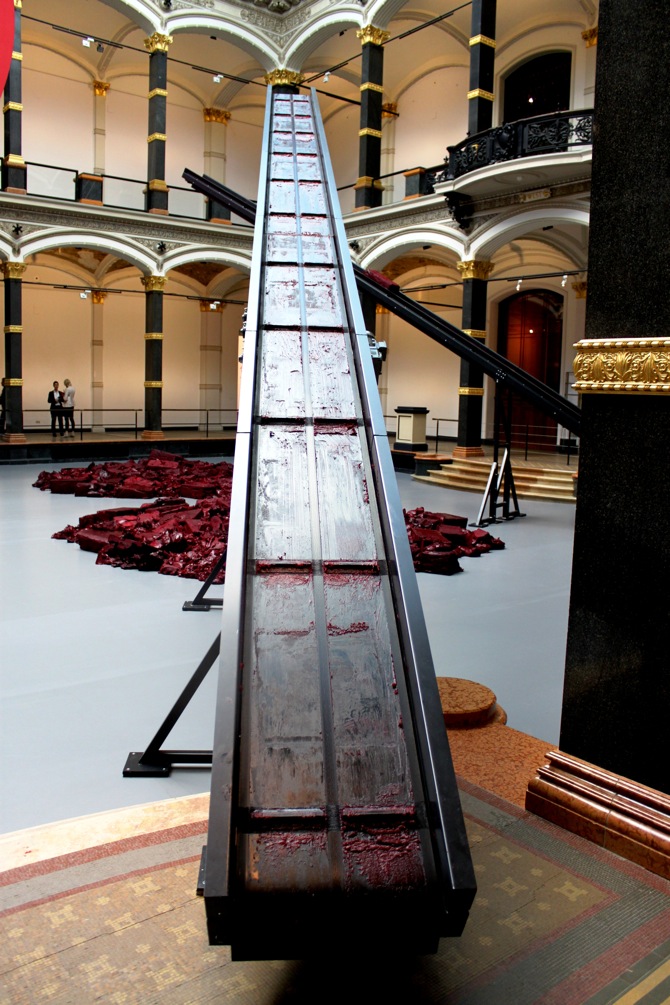
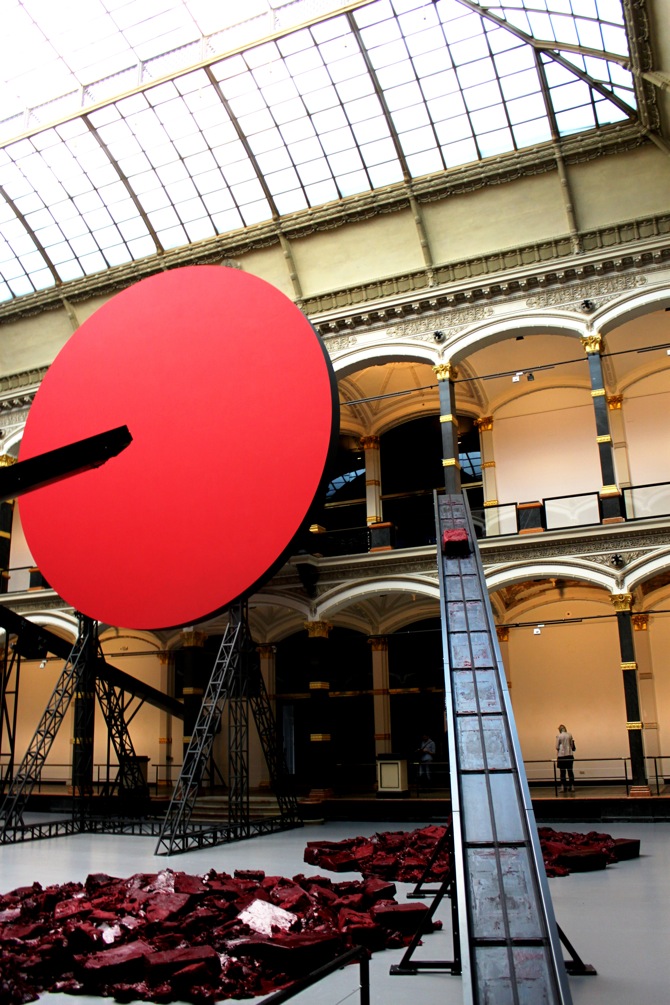
all images by Anneli Bootz / artfridge, courtesy Martin-Gropius-Bau and Anish Kapoor
Anish Kapoor’s first large solo show in Germany “Kapoor in Berlin” was one of
the most highly anticipated openings so far this year. Displayed in the
soaring glass house of Martin-Gropius-Bau, which is a visual treasure itself with its intricate mosaic and the renaissance-styled architecture, the setting seems to be ideal for the enormous works of the celebrated Indian sculptor.
Kapoor’s work “Symphony for a Beloved Sun” comprises the entire spacious atrium of the building. The installation’s centre piece is a monumental red
circle, surrounded by conveyer bands that transport chunks of red wax
upwards and automatically guide the gaze up into the beauty of the
vitreous ceiling. And then you wait. You wait for the red wax to fall
all the way down onto the floor; you wait for the moment when the
somewhat soft appealing material makes a smacking noise while hitting
one of the various red islands that mark the process of the already
plunged pieces. Most compelling are two impressions: a sincere aesthetic
but also an ominous atmosphere. Designed especially for the art space
in Berlin, “Symphony for a Beloved Sun” is both, a combination of a
sculptural work and theatrical scenery but also a manifesto of
historical reference. As a tribute to former exhibitions it brings to
mind Joseph Beuy’s work “Lehmlinge” designed for the “Zeitgeist”
exhibition at the same atrium after the Second World War, where Beuys
amassed a six metre high pile of Berlin clay to remind of the city’s
post-war era. Playing into a direct symbiosis of historical reference,
movement, architecture, colour, sound and silence, Kapoor manages to
create a work of multiple influences.

